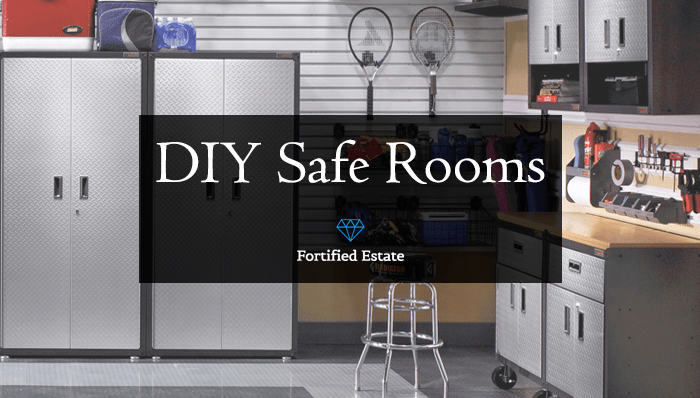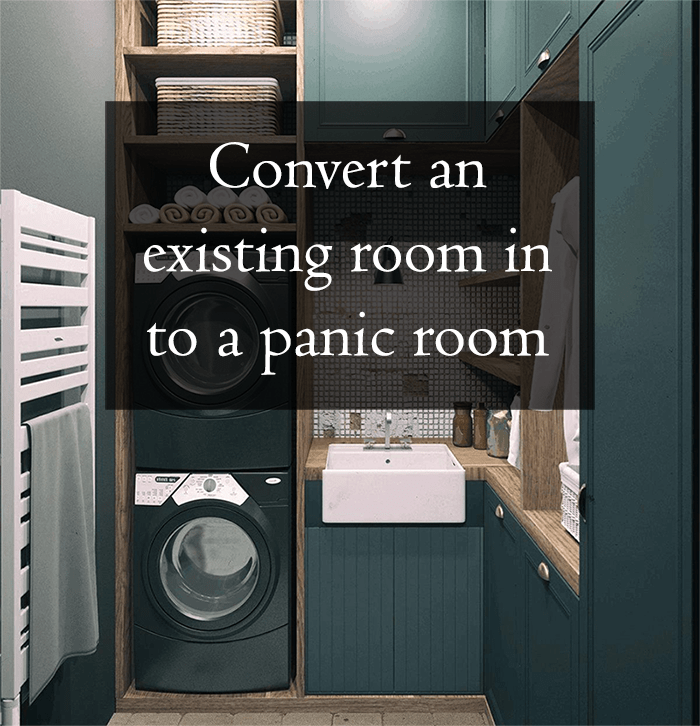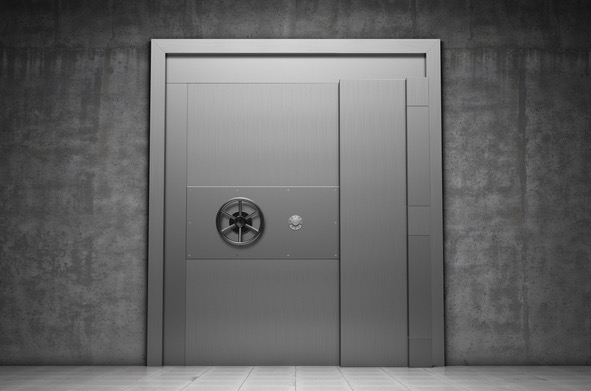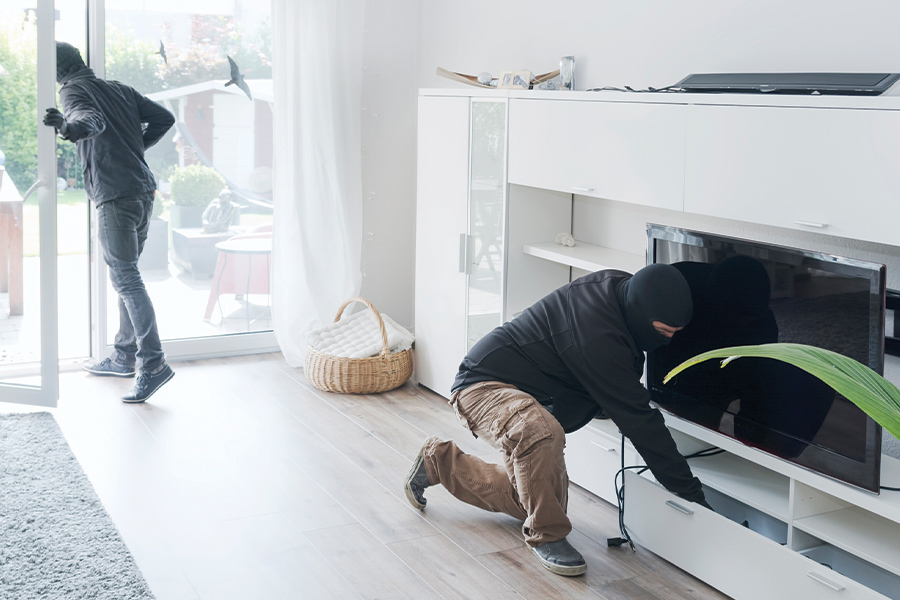Imagine having a sanctuary within your own home, a safe haven where you can retreat to in times of emergency. That’s exactly what a panic room offers, and in this article, we will explore everything you need to know about creating one in your own home. From understanding the concept of a panic room to practical tips on design and essentials, we’ve got you covered. So, get ready to take a closer look at this crucial aspect of home and personal security and discover how you can create your very own panic room, ensuring peace of mind for you and your loved ones.
How to Create a Panic Room in Your Home
If you’re concerned about your safety and want to have a secure space in your home, creating a panic room is a great option. A panic room is a designated area in your home where you can retreat in the event of an emergency or threat, providing you with a safe haven until help arrives. In order to create an effective panic room, there are several important factors to consider. This article will guide you through the process of assessing your security needs, choosing the right room, reinforcing it, stocking essential supplies, creating secret entrances/exits, installing communication systems, enhancing air filtration and ventilation, adding backup power sources, securing the surrounding perimeter, and establishing an emergency protocol.
1. Assessing Your Security Needs
Before you start creating your panic room, it’s essential to assess your security needs. Determine the level of threat you are facing. Are you concerned about potential burglaries, home invasions, or natural disasters? Identifying your specific concerns will help you make informed decisions when it comes to securing your panic room.
Next, consider the potential entry points in your home. Look for vulnerable areas such as windows, doors, and other openings that could be targeted by intruders. By identifying these areas, you can take steps to reinforce them and make them more secure.
Space is another important factor to consider. Evaluate the available rooms in your home and select one that is suitable for your panic room. Ideally, it should be an interior room that is easily accessible by all family members. This will ensure that everyone can reach the panic room quickly and safely.
Finally, assess the necessary provisions for your panic room. Think about how long you might need to stay in the room in case of an emergency. Consider essential supplies such as water, food, first aid kits, and communication devices. Having these provisions in place will help you and your family stay safe and comfortable while inside the panic room.
2. Choosing the Right Room
Choosing the right room for your panic room is crucial. Ideally, you should select an interior room that is away from potential entry points. This will make it more difficult for intruders to access the panic room. Additionally, consider the proximity of the room to escape routes such as doors or windows. If possible, choose a room that allows for quick and easy escape in case of emergency.
Evaluate the structural integrity of the room. Ensure that the walls, floor, and ceiling are strong and sturdy. You want the room to provide a secure barrier against threats. If necessary, consult with a professional to assess the structural integrity of the room and make any necessary reinforcements.
Accessibility to essentials is another important consideration. Make sure that the chosen room allows for easy access to essential supplies such as water, food, and first aid kits. This will ensure that you and your family can sustain yourselves while inside the panic room.
3. Reinforcing the Room
Once you have chosen the right room for your panic room, it’s time to reinforce it. Strengthen the doors and windows to make them more resistant to forced entry. Install heavy-duty deadbolt locks, reinforced hinges, and shatter-resistant glass if possible. These measures will significantly increase the security of your panic room.
Consider upgrading your security measures by installing a robust alarm system, security cameras, and motion sensors. These will provide an added layer of protection and alert you to any potential threats.
For an extra level of protection, you may choose to install bullet-resistant materials such as reinforced walls or ballistic panels. While this may be a more costly option, it can greatly enhance the safety of your panic room in the event of a violent intrusion.
Implementing surveillance systems within and around the panic room can provide you with valuable information about what is happening outside. This can help you make informed decisions and communicate with authorities if needed.
4. Stocking Essential Supplies
Preparing your panic room with essential supplies is crucial for your safety and well-being. Make sure you have an ample supply of water and non-perishable food stored within the room. This will sustain you and your family in case you need to stay in the panic room for an extended period of time.
A first aid kit is another essential item that should be readily available in the panic room. Stock it with basic medical supplies, medications, and any necessary medical equipment for emergency situations.
Communication devices are vital for staying connected with the outside world. Have a landline phone or a backup cellphone available in your panic room. Additionally, consider using two-way radios or walkie-talkies to communicate with family members in other parts of the house or to contact authorities if necessary.
Sanitation and hygiene supplies should not be overlooked. Keep a supply of toiletries, toilet paper, garbage bags, and cleaning materials in your panic room. Maintaining cleanliness and hygiene will contribute to your overall well-being while inside the room.
5. Creating Secret Entrances/Exits
To enhance the security and functionality of your panic room, consider creating secret entrances or exits. These hidden passages can provide an additional layer of protection and make it more difficult for intruders to locate the panic room.
Install hidden doors or panels that blend seamlessly with the surrounding walls. These can be camouflaged to resemble bookshelves or cabinetry, adding an element of disguise. False walls or flooring can also be utilized to hide the entrance to the panic room.
By adding these secret entrances/exits, you create a sense of mystery and make it challenging for intruders to identify the location of your panic room.
6. Installing Communication Systems
In order to effectively communicate with the outside world during an emergency, it’s important to install communication systems in your panic room. A landline phone is a reliable option, as it does not rely on cellular networks. Have a dedicated phone line installed in the panic room to ensure you can make calls even if the power is out.
Having a backup cellphone is also recommended. Keep it fully charged and store it in the panic room alongside a charger. This backup phone can be used in case your primary phone is unavailable or has no signal.
Two-way radios or walkie-talkies are another useful communication tool to have in your panic room. They allow you to stay connected with family members or communicate with authorities, even if your primary communication devices are not functioning.
Consider installing a panic button or alarm system that can immediately alert authorities to your location. This provides an additional layer of security and peace of mind.
7. Enhancing Air Filtration and Ventilation
Maintaining proper air quality inside your panic room is essential for your health and well-being. Ensure that the room has proper ventilation to allow fresh air to circulate. This can be achieved by ensuring air vents are not blocked and by periodically opening windows when it is safe to do so.
Installing an air filtration system can greatly improve air quality inside your panic room. It will filter out pollutants, allergens, and potentially harmful gases, providing clean and safe air for you and your family.
Additionally, create alternative ventilation options in case the primary system fails. Consider installing a window fan or a portable air purifier that can be used as a backup. Regularly maintaining these ventilation systems is crucial to ensure they function properly when needed.
8. Adding Backup Power Sources
A power outage during an emergency can leave you without essential services in your panic room. To prevent this, it’s important to have backup power sources.
Investing in a generator is a reliable option to ensure a continuous power supply. Generators can provide electricity to power essential devices and appliances in your panic room, such as lights, communication devices, and refrigeration units for perishable supplies.
Consider using uninterruptible power supply (UPS) systems for sensitive electronic equipment. These systems provide temporary power during short outages, allowing you to save important data or safely shut down devices.
Exploring solar power options is another sustainable backup power source. Solar panels can collect and store solar energy, providing an eco-friendly and renewable power supply. Make sure to store extra fuel and batteries for your backup power sources to ensure they can be utilized when needed.
9. Securing Surrounding Perimeter
While your panic room itself is an important security measure, it’s also crucial to secure the surrounding perimeter of your home. Implementing security cameras and motion sensors around the property can act as a deterrent and provide early warning of potential threats.
Sturdy fencing and gates are another effective way to secure the perimeter. Opt for materials that are difficult to climb or break through, such as wrought iron or chain-link fencing with spikes at the top. Ensure that gates are regularly maintained and locked when not in use.
Outdoor lighting is an essential security feature. Install motion-activated lights near potential entry points to deter intruders and to provide visibility during nighttime. Well-lit areas make it harder for potential threats to go unnoticed.
Consider using landscaping deterrents, such as thorny bushes or gravel paths, around the perimeter of your home. These can make it more difficult for intruders to approach your property undetected.
10. Establishing Emergency Protocol
Creating an emergency protocol is essential for your safety and that of your family members. Start by developing a family emergency plan that outlines what to do in various scenarios. This plan should include designated meeting points, emergency contacts, and evacuation routes.
Establish communication protocols for different situations. Determine how you will communicate with family members if separated, and have a designated person outside your home to contact in case of emergencies.
Regularly practice drills and simulations with your family to ensure everyone is familiar with the panic room and the emergency protocols. This will help reduce panic and increase the effectiveness of your response during an actual emergency.
Instruct all family members on the proper usage of the panic room. Make sure everyone knows how to access the room, secure it from inside, and use the essential supplies. This knowledge will empower you and your family to stay safe and secure during a crisis.
By following these comprehensive steps, you can create a panic room that is secure, well-stocked, and equipped to handle emergencies. Remember, safety should always be a top priority, and investing time and effort into creating a panic room is a proactive way to protect yourself and your loved ones.






